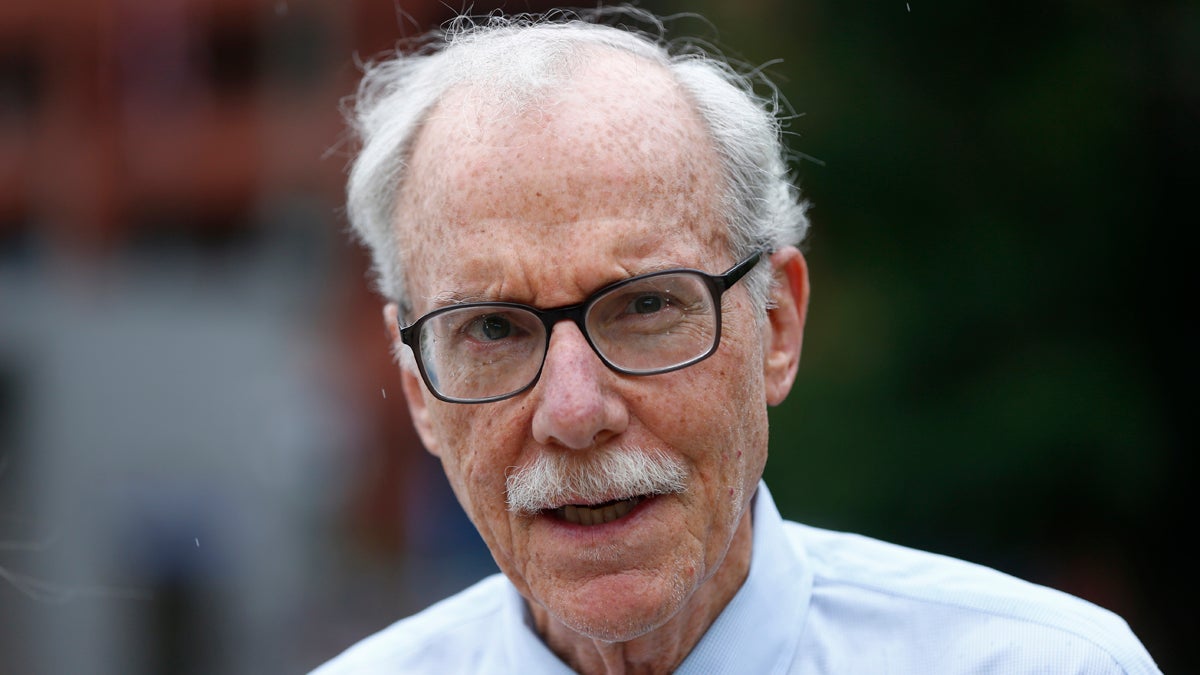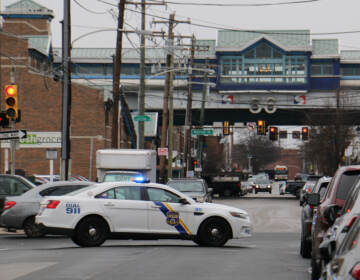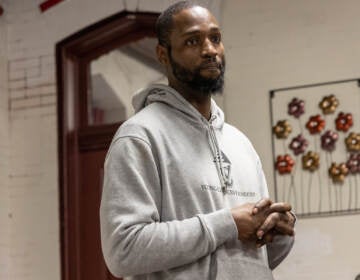Stop-and-frisk abuses ebb, but report says some Philly police still ignore guidelines
Thousands of residents — predominately black — are still being questioned and patted down without any legal basis.

Attorney David Rudovsky says Philadelphia has made progress in reining in officers who ignore the city's stop-and-frisk guidelines, but more vigilance is needed. (AP file photo)
Although Philadelphia police officers are stopping and frisking fewer pedestrians at random than ever before, thousands of residents — predominately black — are still being questioned and patted down without any legal basis. And the problem persists, in part, because police supervisors are not taking the issue seriously.
That’s according to the latest report civil rights lawyers have submitted to the court monitor overseeing a federal settlement reached in 2011 aimed at reforming the stop-and-frisk program.
Since then, the overall number of pedestrian stops has plunged — from around 250,000 a year in 2011 to about 100,000 in 2017. In 2011, more than half of all those police stops were unconstitutional. Now, about two out of 10 are illegal.
It is progress, but police officials and civil rights lawyers agree: That percentage is still too high.
The Philadelphia Police Department implemented accountability measures last year, such as requiring that supervisors review every stop-and-frisk report; following up with officers who conduct improper stops; and disciplining those who repeatedly stop and frisk illegally. Yet, according to the report, police bosses are often ignoring their own guidance.
Police supervisors in 2017 justified stops by approving “panhandling,” “standing on the corner,” and “person in alley” as causes for stopping a pedestrian.
Civil rights lawyer David Rudovsky is troubled by this.
“That officers continue to believe such stops and frisks are legal, and that their supervisors regularly fail to correct these practices, demonstrates the need for comprehensive accountability measures,” he wrote in the report. Rudovsky, along with the ACLU of Pennsylvania, has conducted periodical reviews on the city’s stop-and-frisk progress since the consent decree was approved by a judge six years ago.
City officials push back, saying the police department has taken new steps to eradicate illegal stops.
In its own filings to the court, the city offered two dozen examples of police supervisors who were given “one-on-one instruction” after signing off on police reports for stops and frisks that did not meet the legal threshold.
Furthermore, the city said, a list is circulated to the department every week of all police personnel who have required additional training about stop and frisk issues.
Craig Straw, Philadelphia’s No. 2 city solicitor, told the court that the city will be making a database of the reports so the department can track officers who ignore the stop-and-frisk guidelines.
“These measures are expected to provide better education to PPD officers, to enhance the flow of information among PPD units and personnel, and to eliminate errors in the reporting process, thereby reducing the number of improperly recorded pedestrian stops,” Straw wrote.
More monitoring by department
Police can stop a someone if there is a reason to believe he or she has committed a crime, or that a criminal offense is afoot. But this “reasonable suspicion” standard is discarded in far too many pedestrian interactions, Rudovsky said.
A number of directives the police department passed last year require an internal audit of every illegal stop and the department’s response, whether that was putting the officer through new training or disciplinary action.
These reform measures were prompted by the litigation but accelerated under the leadership of Police Commissioner Richard Ross and Mayor Jim Kenney, who campaigned in 2015 on ending unlawful stops and frisking.
Though the police department’s directives aim to identify officers who continue stop-and-frisk abuses, Rudovksy said those efforts should be amplified.
“There are numerous examples where it was pretty clear that what the officer did was improper, but there was no record of any interaction with a supervisor to let him or her know that,” Rudovsky said in an interview. “We think the city has to take much more effective steps in ensuring that all stops are reviewed — and that the supervisors themselves are trained sufficiently to be able to determine what’s a good stop and what’s a good frisk and what is not, and then to take appropriate remedial action.”
Of the sample of nearly 4,600 stops examined for the first half of this year, 68 percent targeted black residents and 10 percent involved Latinos.
Although there are nearly an equal number of black and white residents in the city, police stop black Philadelphians three times more than white residents.
When it comes to frisks, the disparity is even worse. In the first half of 2017, police frisked black residents more than six times as often as white pedestrians. Police recovered guns 0.7 percent of the time during those pat-downs.
Some bright spots, however, do exist in the report, including the 60 percent decline in stops. The number of pedestrians questioned by police in 2017 is expected to clock in around 112,000, the lowest number since the settlement and the reform measures first took hold.
At the same time, Rudovsky noted, violent crime has not risen. Homicides in Philadelphia are on track to be up around 14 percent from last year, but down from when police were conducting hundreds of thousands more pedestrian stops a year.
“While stop and frisk can be an appropriate police mechanism, we think it has been overplayed as a matter of crime control,” Rudovsky said. “And it creates some significant problems in terms of police-community relations.”
WHYY is your source for fact-based, in-depth journalism and information. As a nonprofit organization, we rely on financial support from readers like you. Please give today.




